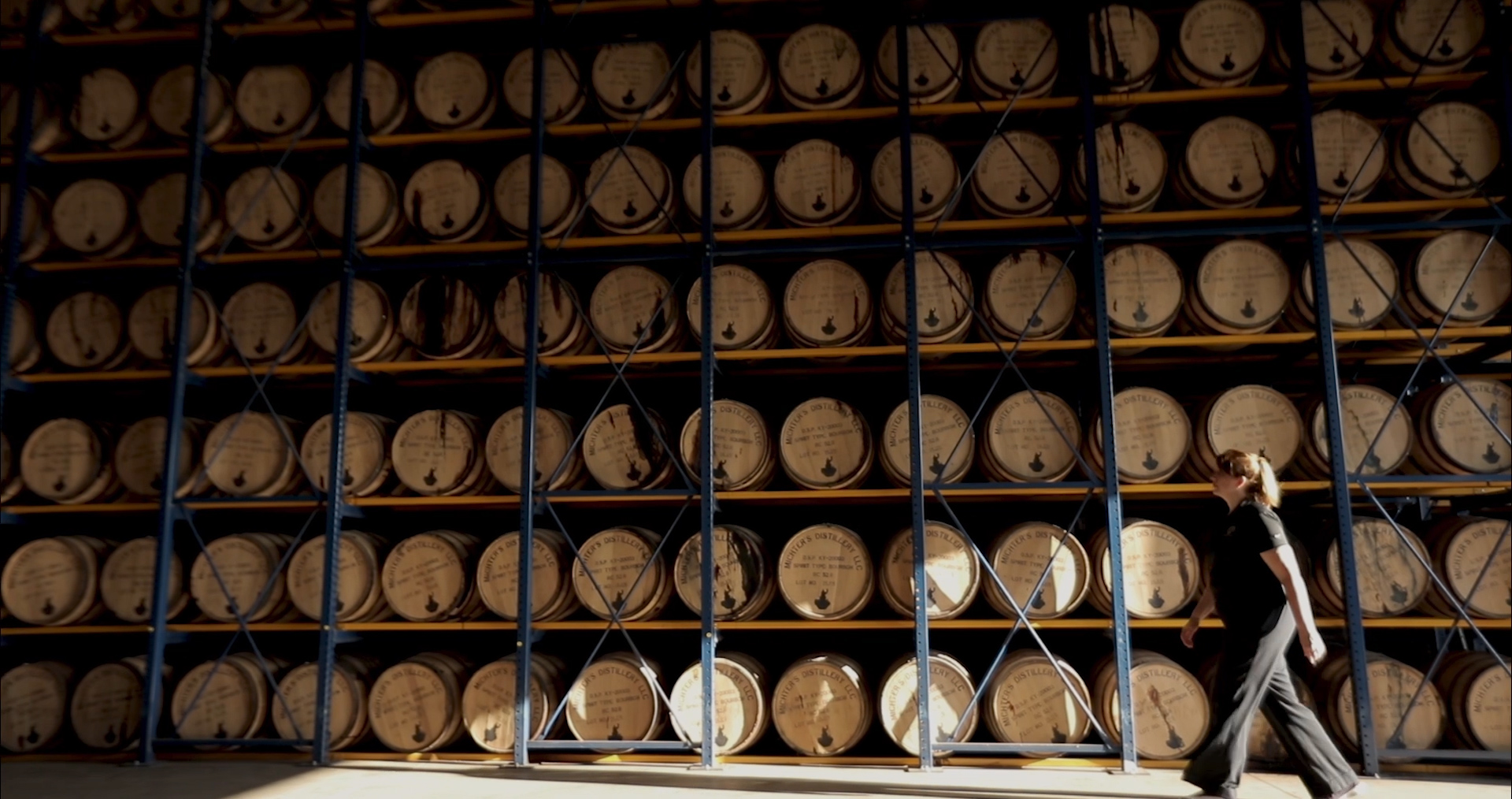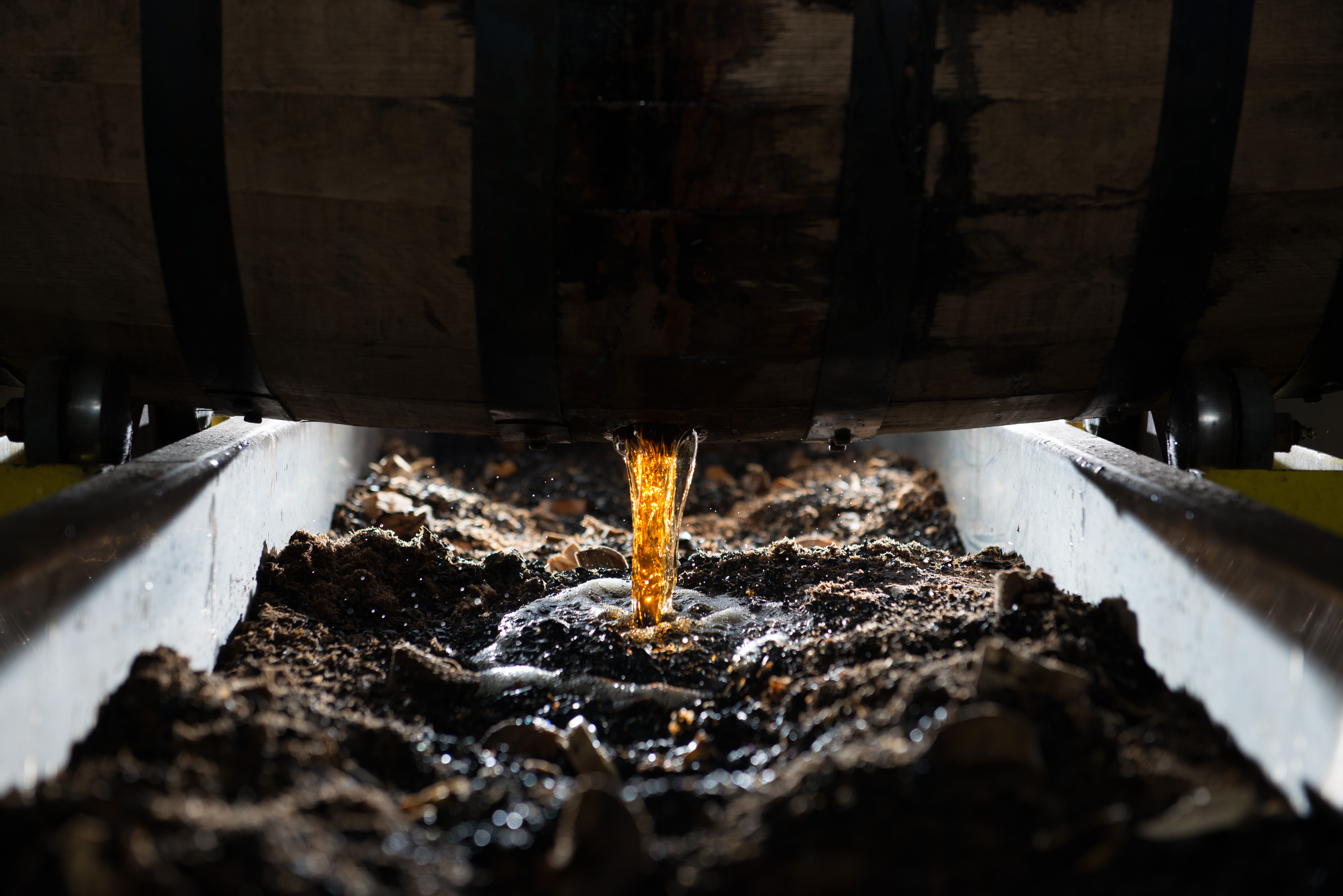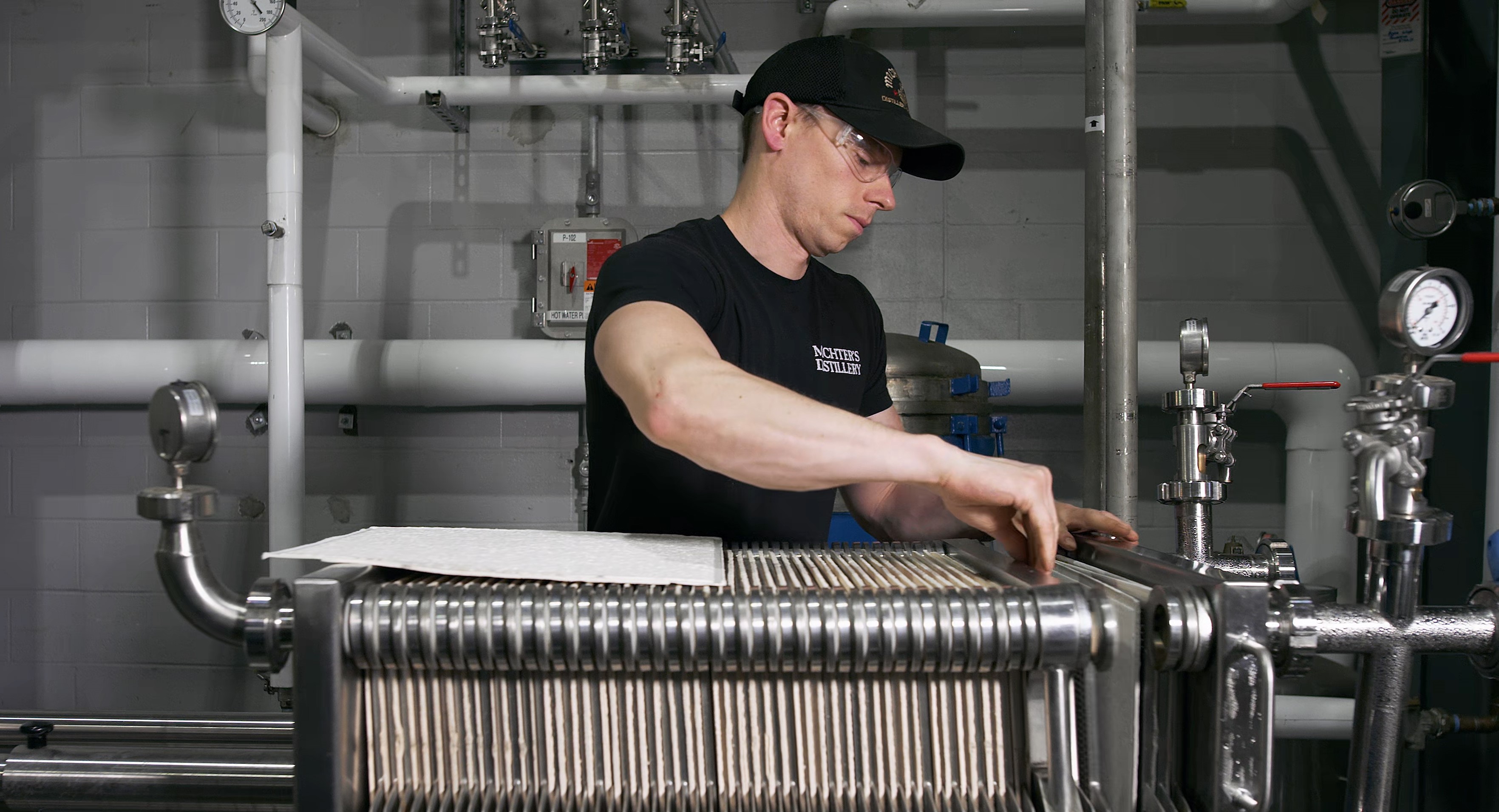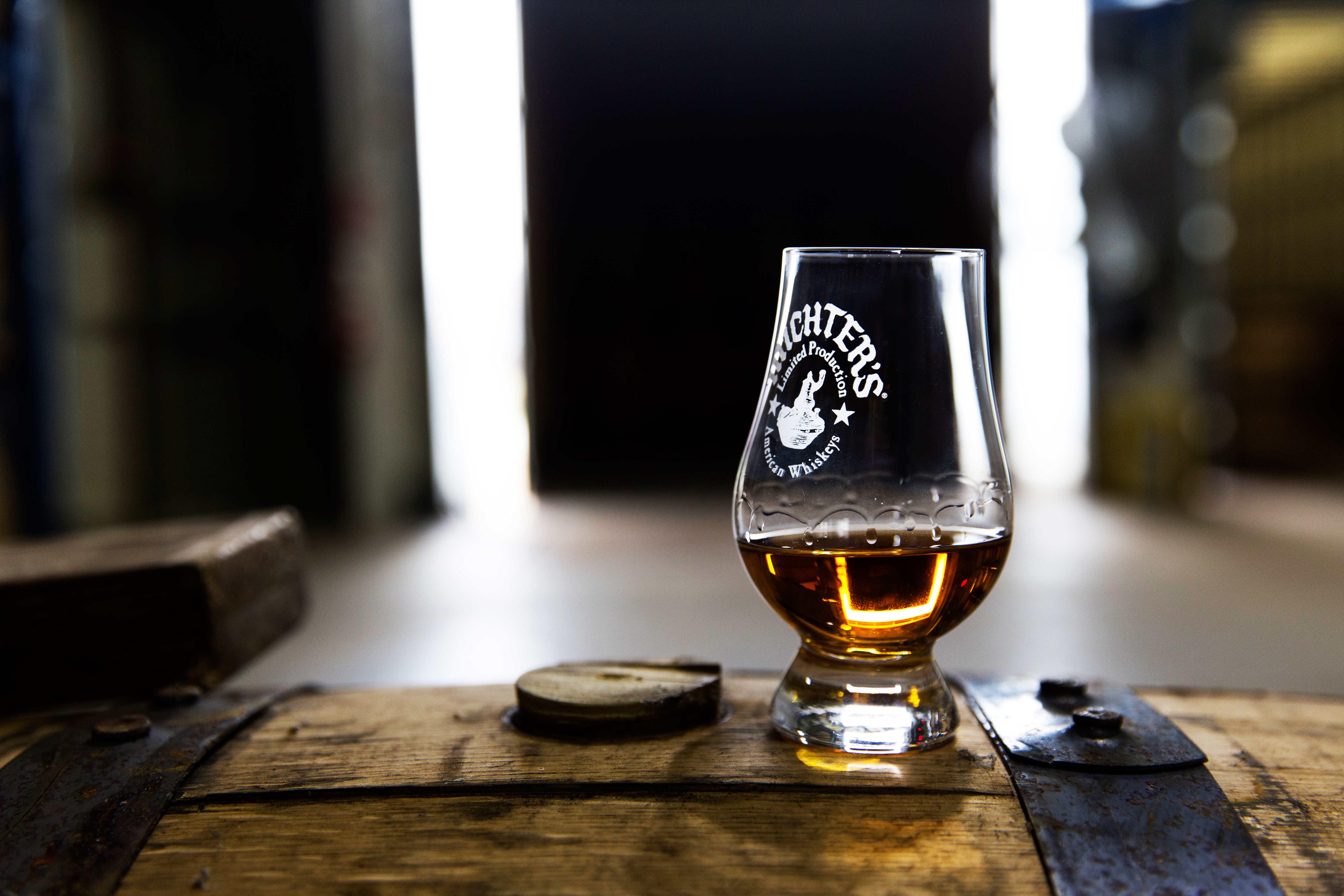Maturation is a crucial step in the process of making whiskey. Time spent resting in oak allows the transfer of sugars from the wood into the spirit that helps create many of the flavors in whiskey. It is a lot more complicated and scientific than that but that’s the gist. While yeast, grains, and water are all crucial components to making a great whiskey, the color and sometimes the most dominant flavors can come from the judicious use of toasted and charred oak.
The help us better understand how barrel-aging and finishing works, we reached out to Andrea Wilson, the Master of Maturation for Michter’s. Wilson’s job is vast but very specific. She manages barrel specifications, barrel procurement, heat cycling and temperature monitoring during aging, tracks maturation of barrels, oversees whiskey filtration in preparation for bottling, and innovation in aging. Naturally, you don’t just walk onto a job like that without some serious credentials. After getting a master’s in Chemical Engineering, Wilson spent years at Diageo working as their Director of Distillation and Maturation for all of North America and also worked as their Director of Whiskey Strategy for North American operations.
All of that is to say that Wilson knows the craft of whiskey deeper than 99.99 percent of people on this planet. We jumped on a call with Wilson last week to talk about the release of the much-sought-after 20-Year Michter’s Bourbon that just dropped. The conversation ended up being about maturation, finishing, and how the company actually gets their whiskey from the barrel into the bottle. Hopefully, it’ll illuminate how whiskey is aged and how Michter’s gets such beautiful whiskey into the bottle.

What does it mean to be a Master of Maturation? What’s your day-to-day like?
I actually look after wood selection and wood preparations such as the natural seasoning and air-drying protocols that we have for toasting and charring levels with our specific temperatures. I validate the quality with our toasting and charring temperatures and make sure that they meet our quality standards. I’m responsible for looking after the barrels and deciding — with our Master Distiller — when they are ready to be pulled for whatever products we’re working on that day. I also work on the storage program in terms of the design and construction of our warehouses. I work with great architects and engineers in our community to help us with those designs and that covers everything from air movement, temperature, and humidity to the actual materials for construction.
I also host people and provide great hospitality and educate them on the brand.
That’s a lot. Something that’s become very popular again is the toast barrel finish. Can you walk us through what that process is like?
Yeah, the Toasted Barrel series has been very popular for Michters. It’s a very fun project for us to do. So we have the Toasted Bourbon, Toasted Barrel Strength Rye, and the Toasted Sour Mash. But let’s look at the bourbon.
So what we do is we take our Kentucky straight bourbon after it’s been aged from five to seven years. We take it out of the barrel and then we take that liquid and we put it back into a toasted-only barrel for a period of time.
Now, the first time that we did this, it was aged in that second barrel for only 28 days. We had all agreed that we weren’t going to tell anyone and then Willie Pratt — who was our Master Distiller at the time — went out and told everybody. We thought it would be something that we would have some ability to adjust in the future, either with how long we leave it in the barrel or otherwise. Since then, we’ve stopped disclosing how long it spends in the second barrel. But I can tell you that it’s only in that second barrel for a short period of time still.
What the finish really does is that it helps people get an understanding of the power of the toasting process, and how it can really influence the flavor profile of the product. It’s a beautiful expression. And even though the bourbon expressions are the same five to seven-year whiskeys, once you put them in those toasted barrels, you’re going to clearly see a difference in a short amount of time. Plus, the toast profiles may change due to the natural air drying time, and then that might change the time that the bourbon sits in that second toasted barrel.
Let’s take a step back and look at how your choose barrels for releases. How much of an idea do you have of which barrels might go into this year’s 20-year release or the next Sour Mash? How does that selection process work?
Well, different products have different processes that go along with them. So the 20-year is a beautiful product where we’ve aged barrels for over 20 years. We tasted through them. We bring those casks forward and we say, “These are actually really brilliant. They’re really beautiful, and we are ready to use them for a release.”
What are you looking for when you’re tasting through them?
We are rating them on everything from the aromatics to the complexity of the product, the texture of the product, the color, the finish, the overall dynamic experience across your palate. Those are the kinds of things that we’re looking at. We are a very quality-focused company.
So we want people to have a really exceptional experience when they experience our products whether it’s our bourbon, our ryes, anything out of our toasted series, or any of the special release expressions like the 20-year. We want people to have a “wow!” moment. We want them to know that this is something really special that took years to develop.
All of our barrels are like children. We’re looking after all of them. We’re giving them the freedom to do their magic and have their beautiful reactions, but we want to create the conditions for them to have the highest rate of success possible. We don’t just stick barrels in a warehouse and leave them there, and then come back over 20 years later, and hope for the best. We’re actually searching through them over time to ensure we have the highest probability of success.
And if we do have something that reaches a point where maybe it’s starting to take on some characters that we know and if we leave it there it’s not going to be great, then we’ll go ahead and take it out of wood. We’ll stop the aging on it by putting it in stainless steel drums. We’re going to hold it so we can use it for something later versus leaving it in wood and it taking on too much tannin or wood character where it becomes unusable for us.

What are red flags in a barrel that tell you something’s off?
There are several different components. One of them will be like a tannic component, which is going to resonate as either woody or astringent. And while tannin is great for wine because it provides beautiful structure, it doesn’t have the same role to play in whisky. So we’re going to watch for those kinds of compounds.
We’re going to look for things that are deviances from our profile. So for example, guaiacol is a compound in wood that provides beautiful smoky qualities. But too much smoke may not be consistent with the profile of Michters. And if there’s too much glycol, that could mean that something might have been slightly off in the toasting process.
So we need to watch for those kinds of things. Wood is a living species. We work with our cooperages very closely to monitor the toasting accuracy and the quality of the barrels when they come in. We have to check to make sure we’re getting the right toasting data, the right char data that matches what we requested to our specifications. We’re can do all of that work but sometimes a barrel is just a barrel … and it comes from an original tree. And while we’re all human beings, we’re all different, right? And so there can be little nuances of flavor where we’re like, “Wow, what is going on here?” And it can be beautiful.
But our batches are really small and because we do such a lot of single barrel products, it makes it difficult to project those kinds of things. So we have to watch for them. And if we do find is something that’s really beautiful, then we can figure out what to do with it and how to harness that beauty.
But then if it’s something that is too far out, that’s astringent or bitter, or off, or just something that’s not consistent with our character, then we may have to send that a different route. Which, unfortunately, might be sending it for repurposing as something like fuel ethanol.
Yeah. You can’t win every single one, right? So, let’s look at how the whiskey gets from the barrels that actually make it through selection and into the bottle.
First, we’re going to evaluate the cask before they ever get to the dump floor. We’re looking at them and making sure that they meet readiness to go to the dump floor. The barrels will get pulled and they’ll go to the processing department. Processing then will begin dumping the liquid. They will evaluate the liquid while dumping to make sure that it is consistent with what they’ve been told they’re receiving and that it matches the quality standards that we’ve shared with them.
They test taste and smell everything. It’s a bit like our processing department is like a bunch of chefs in there. They’re going to make sure that we’re not just relying on chemistry or the science of it. They actually want to taste it and make sure that it meets what they believe are the Michter standards before it goes to the bottling line.
They’re also going to be checking the color. They check solids content. They’re going to be checking proof. Once they’ve identified it’s good, then they’re going to send it through custom chill filtration.

Walk us through that process because it gets slagged off a lot.
Essentially, there are a lot of people who may or may not believe in chill filtration, but it is a fundamental part of what we do here at Michters. So there are a lot of changes in the whiskey in the barrel that is directly related to storage in wood. Such as the development of various esters, or acids, that drive tremendous complexity into the product. We’ve developed a custom chill filtration process for each different type and different age of whiskey we bottle. We use this process to really highlight what that whiskey has to offer, and that helps us avoid the dominance of certain characteristics that we don’t want to dominate that flavor profile.
I usually try to say to people that it’s not about adding or taking away from the whiskey. It’s about striving to create an exciting and dynamic experience for the consumer, that has a defined beginning, middle, and end. Anytime you filter anything, you can impact color, flavor, aroma, texture. So it’s important to understand the whiskey that took years to develop in the barrel and that’s why we don’t want to leave it to chance. We want to skillfully determine how to best showcase certain characteristics in the whiskey instead of just allowing it to be overwhelmed by dominant characteristics.
Right.
For me, it’s like having a room of ten people. If nine of them are speaking loud and one person is speaking softly, you may not hear what that one person has to say. But what they have to say might be really important. So if you adjust the noise level, then you get to hear what everybody is saying. That’s my analogy for custom chill filtration. We don’t filter our whiskeys or bourbons or ryes all the same way because we want to respect them. But we want to highlight what took years to develop in that barrel.
As someone who’s got such a deep knowledge of wood and maturation, what surprises you still?
I think what surprises me and continues to surprise me is that even though you work with wood for such a long time, it continues to evolve. I’m so happy that there’s so much respect for oak. You know there are over 400 species of oak actually? And the spirits industry is really only accessing about 16 of them.
Interesting.
I’m excited to see what happens as people continue to work with different oak species. What they can impart to the whiskey can be quite amazing. I mean, obviously, there’s so much discussion about yeast. Everybody’s always talking about yeast…
I’m guilty of that for sure!
But I think that barrel extractives have as much of a significance in the influence of your final product. And I think that in a lot of ways we’re only just touching the surface of how to really leverage oak. You know and it brings so much joy to work with the wood because it’s almost like the wood is begging you to pull these extractives out of it so that you can really showcase what that beautiful tree is able to impart to the whiskey.








